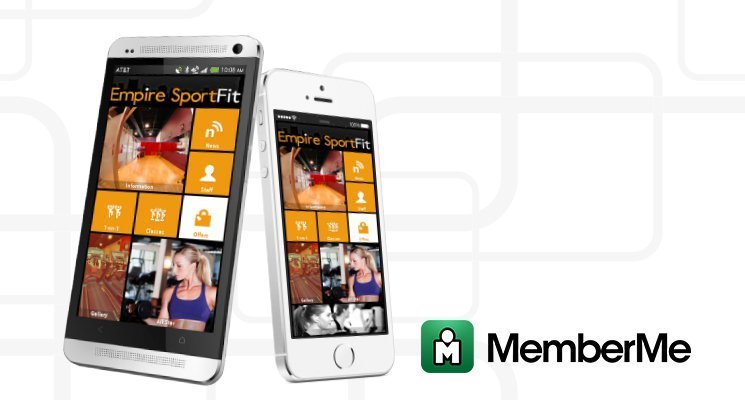IHRSA’s 2014 33rd Annual International Convention and Trade Show offered up so much food for thought that you’re probably feeling stuffed right about now. But it’s worth really digesting what author Dan Heath had to say in a general session discussion during the event. His talk, “Decisive: How to Make Better Choices in Life and Work” took a close look at the foundation upon which all business are built: decisions. Good decisions can make you; bad ones can break you. How can you be sure you’re making sound decisions?
Heath identified four elements — or, as he calls them, “villains” — of bad decisions: (1) narrow framing, (2) confirmation bias, (3) short-term emotion, and (4) over-confidence. He also offered a strategy for countering each of these villains; he calls it the WRAP strategy.
If you’re framing out an issue too narrowly, you have blinders on; you can’t see the full picture, so you can’t make a sound decision. To counter this villain, use the “W” in “WRAP”: Widen your options. Try to see more than just the two possibilities of making the decision or not making it. If you’re working with a confirmation bias, you’re not gathering enough information before making your decision — you’re seeking reassurance about your preconceived notions rather than the truth about the issue. To counter this one, use the “R”: Reality-test your options. Find a real-world way of testing your options before you make a decision. If you’re relying on short-term emotion, you’re not taking time to think things through. The remedy? “A”: Attain distance before you decide. If you feel emotional about a decision you have to make, give yourself time, or take a step back. You can act more rationally with distance. Finally, there’s the problem of over-confidence. If you’re too confident, you think you know more about what will happen in the future than you really can know. You counter this “villain” with the “P” in “WRAP”: Prepare to be wrong. To make such preparations, you set up what Heath calls a “decision trip-wire,” something that makes you, at some future point, go back, assess the decision you made, and alter or undo it if necessary.
As a gym, health club, fitness center, or sports facility, your business relies on dozens or scores (or more!) of small decisions each day. Do you schedule a cycle class in the morning or the evening, or both? Do you hire a trainer who specializes in HIIT workouts or more of a generalist? Do you purchase Vibration Training machines? White towels or beige ones? And are you going to fire that employee who is slacking off every time you look at him? There are these and so many more, and it can be hard to know what’s right. Having a rubric that helps you know when you might be making a bad decision — and what you can do to turn it into a good one — can be immensely empowering. Heath says his scheme isn’t right for all kinds of decisions, and it might not be right for all businesses or all managers, but thinking about it can help you come up with your own plan. Then you’ll be able to make decisions with confidence (but only just the right amount of it!).








 Recently, the Centres for Disease Control and Prevention (CDC) released troubling data: Only about a quarter of kids ages 12 to 15 are getting the amount of moderate to vigorous physical activity recommended by federal guidelines: 60 minutes each day. This follows a report the organization issued last year, revealing that childhood obesity has more than doubled in children and tripled in adolescents in the past thirty years. We all know where childhood obesity, or simply too little activity in childhood, can lead: cardiovascular disease, diabetes, bone and joint problems, sleep apnea, poor self-esteem, stroke, cancer, osteoarthritis — nothing good.
Recently, the Centres for Disease Control and Prevention (CDC) released troubling data: Only about a quarter of kids ages 12 to 15 are getting the amount of moderate to vigorous physical activity recommended by federal guidelines: 60 minutes each day. This follows a report the organization issued last year, revealing that childhood obesity has more than doubled in children and tripled in adolescents in the past thirty years. We all know where childhood obesity, or simply too little activity in childhood, can lead: cardiovascular disease, diabetes, bone and joint problems, sleep apnea, poor self-esteem, stroke, cancer, osteoarthritis — nothing good.
 Around this time of year, there’s a lot of motivation in the air. Even people who avoid making resolutions find themselves catching the New Year’s bug, and they and the resolution-makers alike launch fresh exercise schedules, re-dedicate themselves to weight-loss plans, research new fitness programs to try, and put their workout-related holiday gifts to use. All well and good, but by the time Valentine’s Day rolls around, a lot of that motivation fades away like a bouquet of old roses.
Around this time of year, there’s a lot of motivation in the air. Even people who avoid making resolutions find themselves catching the New Year’s bug, and they and the resolution-makers alike launch fresh exercise schedules, re-dedicate themselves to weight-loss plans, research new fitness programs to try, and put their workout-related holiday gifts to use. All well and good, but by the time Valentine’s Day rolls around, a lot of that motivation fades away like a bouquet of old roses.
 This fall, my gym buddy acquired wearable technology. You know the drill: a sleek-looking wristband; an endless stream of personal fitness data collected, analyzed, advertised on social media; a self-regulated, continuously fine-tuned fitness plan based on the constant feedback. All well and good, but suddenly I found myself going to the gym on my own a lot more. With a sort of built-in trainer and a shift in fitness goals (now, instead of running for thirty minutes on the treadmill, she aimed to take 10,000 steps per day) my friend seemed not to need the gym so much any more — at first.
This fall, my gym buddy acquired wearable technology. You know the drill: a sleek-looking wristband; an endless stream of personal fitness data collected, analyzed, advertised on social media; a self-regulated, continuously fine-tuned fitness plan based on the constant feedback. All well and good, but suddenly I found myself going to the gym on my own a lot more. With a sort of built-in trainer and a shift in fitness goals (now, instead of running for thirty minutes on the treadmill, she aimed to take 10,000 steps per day) my friend seemed not to need the gym so much any more — at first.
 I have a confession to make. I never, ever fill out surveys. I feel irritated when any business interrupts my day with an email seeking my feedback. The impersonal nature of the questions, the idea that I’m just a source of data to be collected, the time it takes to respond — all of these things push my buttons. It’s not that I don’t understand why businesses do it and how the information they gather is useful; I know it’s so that services can be better tailored to consumers. But I can’t help feeling that the cost of filling out a survey, no matter how short and sweet the survey might be, isn’t worth the benefits I reap.
I have a confession to make. I never, ever fill out surveys. I feel irritated when any business interrupts my day with an email seeking my feedback. The impersonal nature of the questions, the idea that I’m just a source of data to be collected, the time it takes to respond — all of these things push my buttons. It’s not that I don’t understand why businesses do it and how the information they gather is useful; I know it’s so that services can be better tailored to consumers. But I can’t help feeling that the cost of filling out a survey, no matter how short and sweet the survey might be, isn’t worth the benefits I reap.